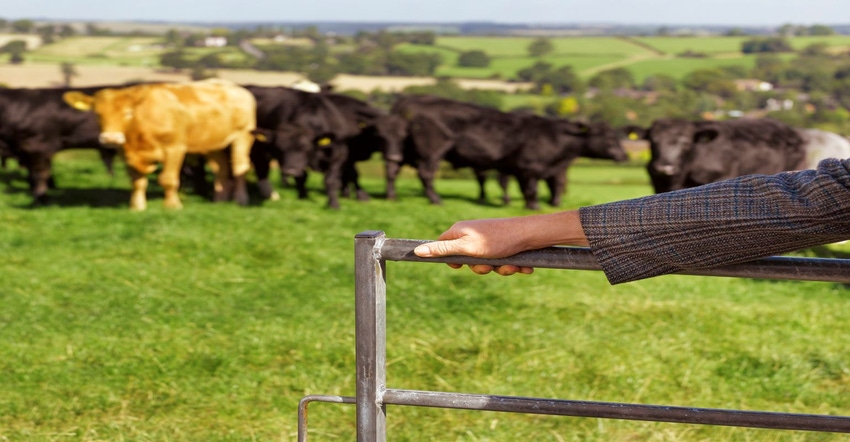February 23, 2022

Cattle producers have long recognized and fulfilled the need to properly care for livestock. Sound care and handling practices, based on years of experience and research are known to impact the well-being of cattle, individual animal health and herd productivity. Cattle are raised in very diverse environments and geographic locations. One specific set of production practices will not work for all cattle producers, but, personal experience, Beef Quality Assurance program principles, and professional judgement serve as valuable resources for proper animal handling and care. Animal behavior knowledge will facilitate proper animal handling to the benefit of both the handler and the livestock.
Knowledge of vision characteristics of cattle will help direct movement. Due to the location of their eyes, cattle have a wide-angle field of vision in excess of 300 degrees.This means they have a narrow blind spot which is directly behind them.They can see some colors and can distinguish between individuals/objects based on shape.Cattle have a tendency to move from dark areas to lighter areas, provided the light is not glaring. Shadows can often appear extreme to cattle.
Handling issues related to vision-related behaviors include:
Keep them in visual contact with other cattle.
Try to ensure loading ramps and handling chutes are designed to minimize the animals seeing distractions outside of the working area. If cattle can see moving objects and people through the sides it may impede their movement forward.
Check for chains, backstops, dogs, or people distractions if cattle are not moving readily through the alley or chute.
It may help to make sure the area you are moving the cattle into is adequately lighted.
Paint the handling facilities a single uniform color because cattle may balk at a sudden change in color.
Cattle have a wider range of hearing than most humans. However, they can locate the source of sound as well as human hearing allows.They are sensitive to high frequency sounds. With this in mind, we can expect that loud noises in working facilities should be avoided, but small amount of noise can assist in moving livestock. Noisy gates and other equipment can cause cattle to balk and resist moving forward.
Producers have long been aware that proper handling management based on their knowledge of animal behavior will reduce stress and behavior related issues. Improper handling that does not consider animal behavior may lower conception rates, reduce immune and rumen function, increase other health problems, cause excessive shrink, and bruising. Make sure to adequately instruct employees of your expectations for low stress cattle handling techniques.
Source: Oklahoma State University, which is solely responsible for the information provided and is wholly owned by the source. Informa Business Media and all its subsidiaries are not responsible for any of the content contained in this information asset.
You May Also Like




